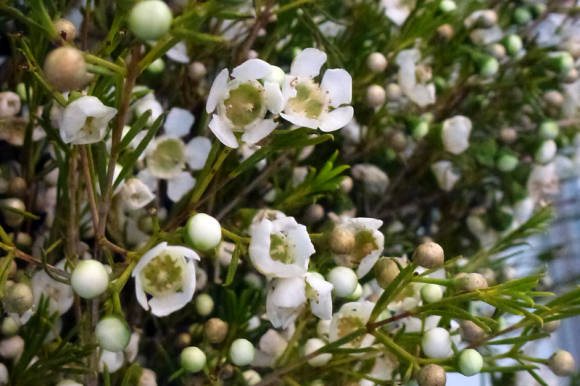Genus kirengeshoma(Kirengeshoma) hydrangea family (Hydrangeaceae) includes only 2 species of plants - kirengeshoma palmate (Kirengeshoma palmata) and Korean kirengeshoma (Kirengeshoma koreana)... On the basis of genetic studies, the genus is considered monotypic, containing one species - the palm-shaped kirengeshoma, which unites these two species.
The first species grows in Japan and North-East China (North Anhui, North-West Zhejiang), the second - on the territory of the Korean Peninsula. It adheres to humid valleys and mountain slopes at an altitude of 700-1600 m above sea level, beech forests with humid air and thickets of ferns.
Genus name kirengeshoma is a collection of three Japanese words - ki (yellow), renge (lotus flower) and shoma (hat) and indicates the shape of the yellow waxy flowers of plants, resembling an oriental hat.
 |
Kirengeshoma palm-shaped (Kirengeshoma palmata) Is a bushy perennial herb with purple simple, erect, tetrahedral stems slightly woody at the bottom. The height of plants during the flowering period reaches 0.8-1.2 m, in culture it is usually no more than 0.7 m in height and the same in width. Has strong short rhizomes. Leaves are opposite, petioled 1-25 cm long, slightly palmate-lobed, with 3-10 shallow lobes, rounded in outline, 10-20 cm in diameter, with a cordate base, pointed at the apex, appressed hairy on both sides, papery to the touch , light or yellow-green, resemble maple leaves. Flowers with 5 irregularly obovate petals 2.5-3.5 mm long, overlapping each other, light yellow, bell-shaped, waxy, hanging down 1-3 on long pedicels - apical and emerging from the axils of the upper leaves. Fruits are three-horned brownish-green cracking capsules with numerous flat pale yellow seeds surrounded by an oblique wing. The plant blooms in our area at the end of August-September.
 |
Kirengeshoma korean (Kirengeshoma koreana) differs slightly - it has not purple, but green stems, and blooms earlier, in the middle of summer.
Growing
When growing kirengeshoma, it must be borne in mind that in nature it grows in forests with rich moist soils and moist air.
It is an excellent plant for semi-shaded areas with decorative leaves and flowers. It grows in our area rather slowly, so 1 sq. m planted 4-7 plants.
The soil of the kirengeshome is loamy, but loose and humus, from acidic to slightly acidic (pH 5.1-6.5). Young plantings are fed in early spring with a complex mineral fertilizer of prolonged action for loosening, which will provide the plant with food for the entire season. Adult plants do not need such feeding; they are simply mulched abundantly with compost. However, a plant needs mulch at any age - the root system of Japanese plants loves coolness.
The soil must be kept constantly moderately moist, and during dry periods, watering is essential to maintain the green cover of the plant in good condition.
Kirengeshoma palmate winters well in central Russia, but nevertheless, it is better to prune the stems in the spring, as for thermophilic plants.
It is not affected by diseases, and from among pests it suffers only from slugs.
Reproduction
Kirengesha is propagated by dividing the rhizomes in early spring, at the beginning of regrowth. Quite young plants lend themselves well to division, in old rhizomes they become very strong, making division difficult.
You can propagate the plant without injuring it by dividing. To do this, in late spring and early summer, take stem cuttings with a "heel" - a piece of rhizome, and root them under lutrasil or in a greenhouse.
Seed reproduction in our zone is difficult due to the fact that the seeds do not have time to ripen, and the seedlings develop very slowly, reaching the flowering period only in the 3-4th year.
Usage
In garden design, the kirengeshoma will attract attention all season - first with beautiful maple foliage, and later with graceful flowering. First of all, it is a great plant for Japanese and Chinese style gardens. It will feel good on the drained bank of the reservoir, which will provide it with the necessary air humidity.The plant is competitive enough to grow in the shade of trees.
 |
In mixborders in partial shade, kirengesh can be combined well with plants of Far Eastern origin - black cohosh, buzulniks, rogers, podophylls. An excellent pair will be made by a variety of ferns, which often coexist with it in nature. In the rocky garden, the kirengeshoma will also find its place on a shady slope and form a dense vegetation cover.
Kirengeshoma can play both the first and second violins in the penumbra plant orchestra, either soloing, filling in gaps, or creating a calm ground cover effect or spectacular borders. Even the garden of the middle zone, it will give not exotic, but the natural sound of a forest garden.









